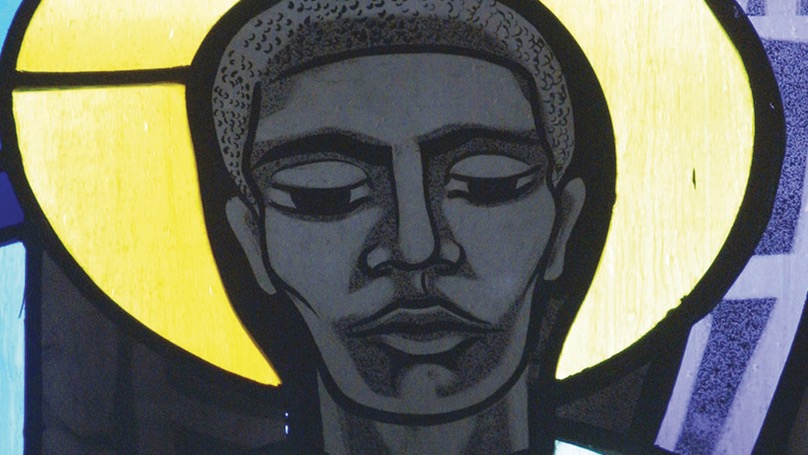The story of St. Charles Lwanga and his fellow martyrs must be considered within the context of the wider narrative of the early evangelization efforts in the modern-day country of Uganda. Theirs is an inspirational story in the face of religious persecution.
Evangelization began in Uganda in 1879, when the pope assigned a missionary order known as the White Fathers to work there. Through much hard work and labor in that corner of the Lord’s vineyard, a strong Christian community was established, although they quickly grew suspect to King Muteesa. Subsequently, the White Fathers withdrew from their missionary efforts for a time after falling out of favor with the king.
In the meantime, those early converts maintained the Church’s evangelical efforts, taking charge to instruct and initiate others into the Church. Many converts lived and worked as pages in the court of king’s son — now King Mwanga.
Charles was one of these pages — some 400 young men who lived and worked for the king — and was himself a convert. He was under the guidance of the head of pages, Joseph Mkasa, a close adviser to the king and a leader among the first Ugandan Christians. When Joseph was eventually killed for criticizing the king’s murder of a Protestant missionary, Charles — who had been living his faith underground — took his place.
Although initially friendly and welcoming to the Christians, King Mwanga eventually turned on them. One presumes this is mostly because the Christians in the court were in opposition to the king’s violent and predatory behavior, including homosexual pedophiliac acts.
With Joseph Mkasa’s death, Charles took his place within King Mwanga’s court and within the Christian community. He was responsible for protecting the young boys from the king’s sexual predilections. Eventually, the king found out that the Christians were converting the young pages, which resulted in their resistance to the king’s advances toward them. Filled with rage, the king put his compound on lockdown, ordering that no one was allowed to leave. Knowing the executioners were on the way, Charles baptized four catechumens that night.
The next day, the king scrutinized the pages and asked the Christians to step forward. Fifteen young men and boys identified themselves and said they intended to remain faithful. The king condemned them to death.
Some were martyred on the road during a march of nearly 40 miles to Namugongo, where the rest were burned alive on June 3, 1886. Along the way, the soon-to-be-martyrs recited prayers like the Rosary and Angelus, and sang hymns in preparation for death.
As Charles was dying, his heart full of love was ablaze. He yearned to invite others to the Faith, saying to an executioner, “It is as if you are pouring water on me. Please repent and become a Christian like me.” As he died, he cried out, “Katonda,” or “My God.”
Once King Mwanga was dead, the Ugandan Christians were visited again by the White Fathers. They found a Church invigorated and enlivened by the blood shed by Charles and his martyr companions. In fact, a third-century Father of the Church named Tertullian said the “blood of the martyrs is the seed of the Church.” This was most definitely true in Uganda.
Although no sacraments were celebrated due to the absence of priests, the Faith was very much alive — the priests discovered more than 500 Christians and 1,000 catechumens upon their return.
The 22 Catholic Ugandan martyrs were canonized in 1964 by Blessed Pope Paul VI. Additionally, there were 23 Anglican martyrs. Their bravery, enthusiasm and joy inspires, especially those whom suffer where the Faith is endangered.
Their feast day is June 3.
Michael R. Heinlein is editor of Simply Catholic.

